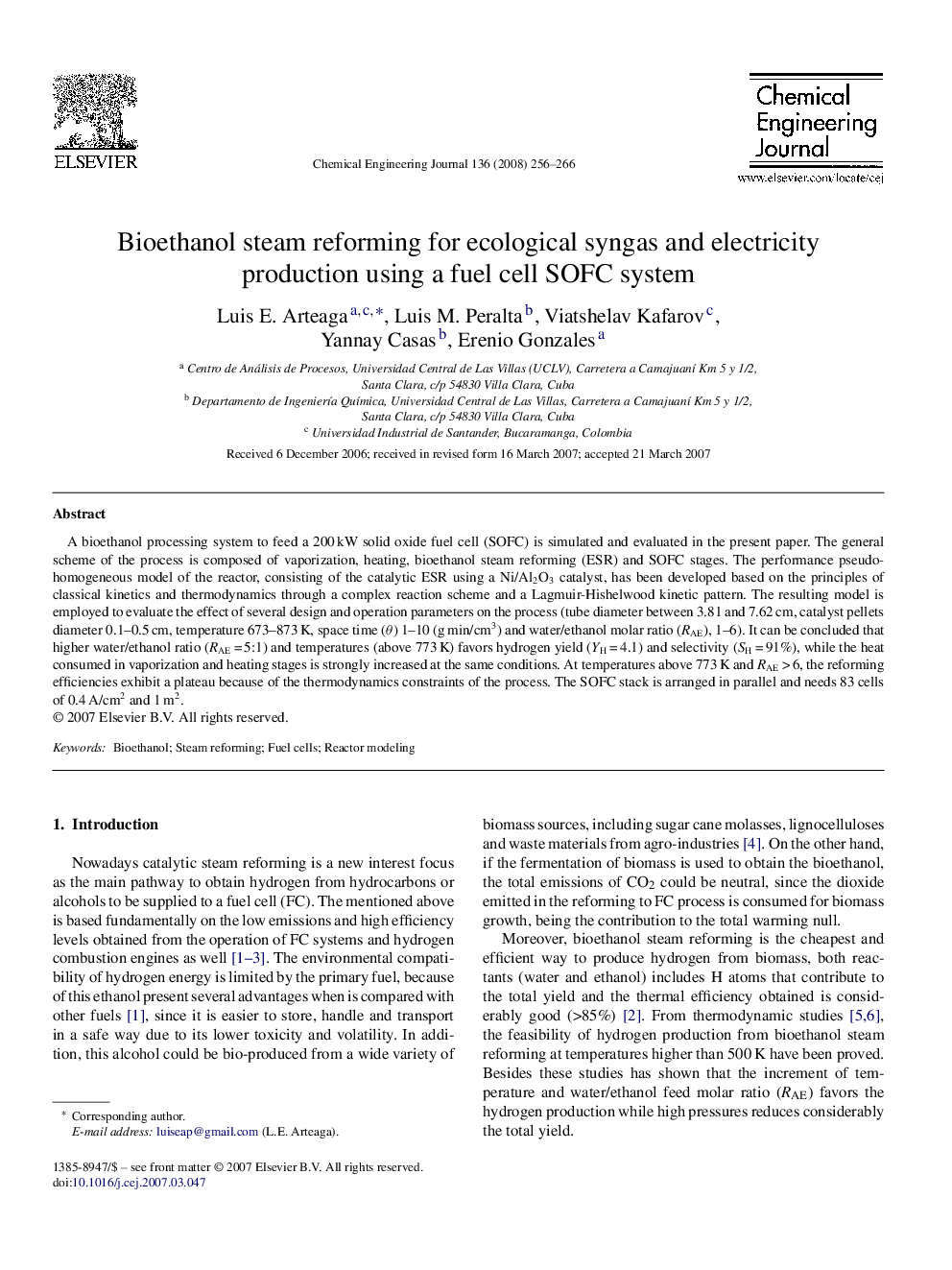| Article ID | Journal | Published Year | Pages | File Type |
|---|---|---|---|---|
| 153428 | Chemical Engineering Journal | 2008 | 11 Pages |
A bioethanol processing system to feed a 200 kW solid oxide fuel cell (SOFC) is simulated and evaluated in the present paper. The general scheme of the process is composed of vaporization, heating, bioethanol steam reforming (ESR) and SOFC stages. The performance pseudo-homogeneous model of the reactor, consisting of the catalytic ESR using a Ni/Al2O3 catalyst, has been developed based on the principles of classical kinetics and thermodynamics through a complex reaction scheme and a Lagmuir-Hishelwood kinetic pattern. The resulting model is employed to evaluate the effect of several design and operation parameters on the process (tube diameter between 3.81 and 7.62 cm, catalyst pellets diameter 0.1–0.5 cm, temperature 673–873 K, space time (θ) 1–10 (g min/cm3) and water/ethanol molar ratio (RAE), 1–6). It can be concluded that higher water/ethanol ratio (RAE = 5:1) and temperatures (above 773 K) favors hydrogen yield (YH = 4.1) and selectivity (SH = 91%), while the heat consumed in vaporization and heating stages is strongly increased at the same conditions. At temperatures above 773 K and RAE > 6, the reforming efficiencies exhibit a plateau because of the thermodynamics constraints of the process. The SOFC stack is arranged in parallel and needs 83 cells of 0.4 A/cm2 and 1 m2.
